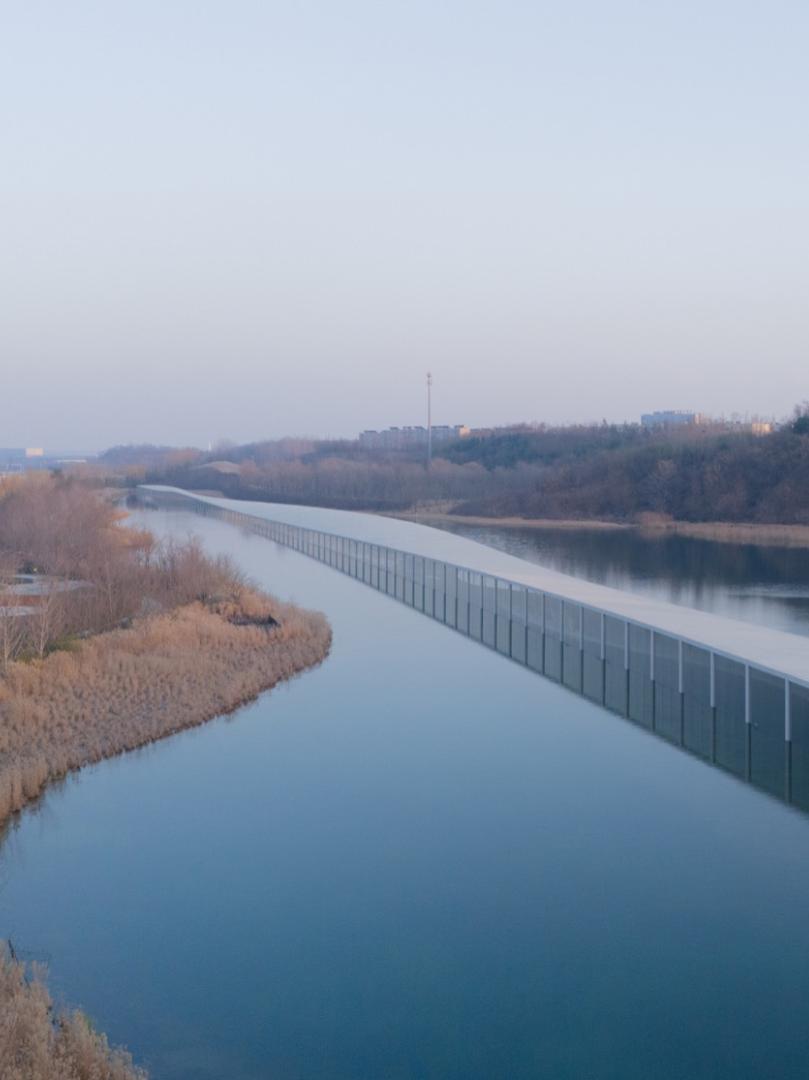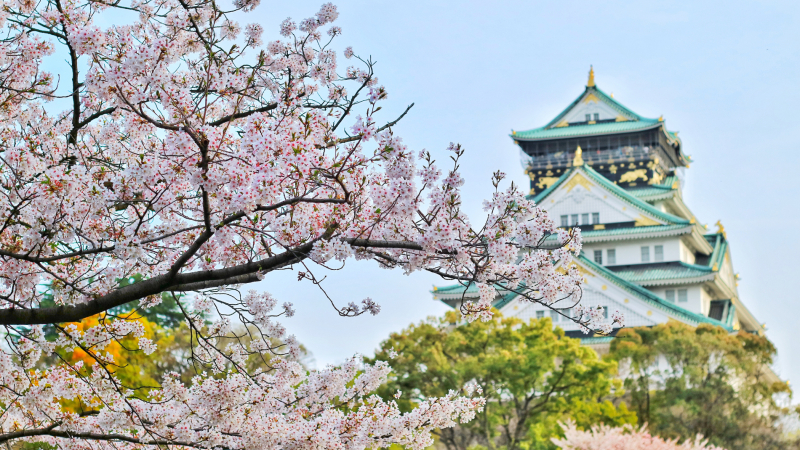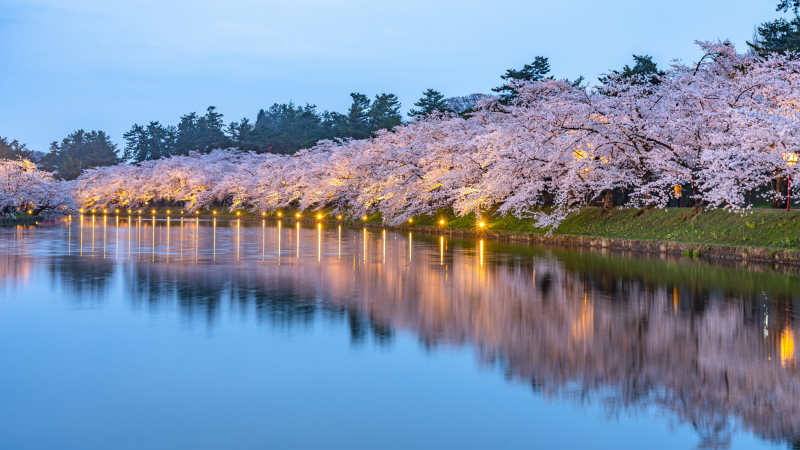Zaishui Art Museum, an architectural masterpiece created by the talented hands of Japanese architect Junya Ishigami, appears like a soft white silk strip across the surface of a calm lake. The image is both poetic and romantic, yet has a breath of modernity and minimalism, making viewers admire and marvel.
The unique and beautiful water museum in China
Located in the heart of Shandong province, China, stands a massive architectural work with an impressive length of up to 1km. This is not just an ordinary construction work, but a passionate project, carrying within it the mission of reviving the harmonious relationship between humans and nature.
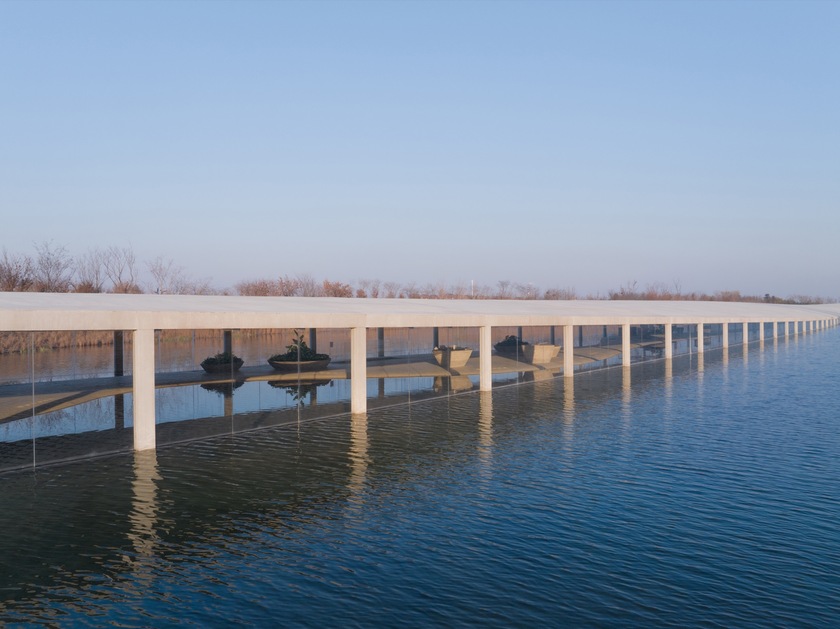
The building with impressive architecture, proudly rising above the beautiful lake
This project is not simply a building, but a multi-functional architectural complex, including many different areas, meeting the diverse needs of the people. The large, modern exhibition area is a place to introduce unique works of art, advanced scientific and technological achievements, or valuable cultural and historical values. The visitor center is designed to be friendly, convenient, providing full information and support services for visitors to visit and explore. The retail space is reasonably arranged, creating favorable conditions for visitors to shop and experience.

The museum has a floor area of 20,000 square meters, supported by 300 pillars placed in a 2-meter deep lake.
The structure consists of two interconnected yet independent steel-reinforced concrete branches. The first is a gently curving, nearly 1km-long structure built into an artificial lake, allowing water to flow inside, creating a dynamic “indoor landscape painting”. The accompanying building is located in the northwest of the site, nestled on nearby dry land. This space includes a cafe, restrooms and additional exhibition space.
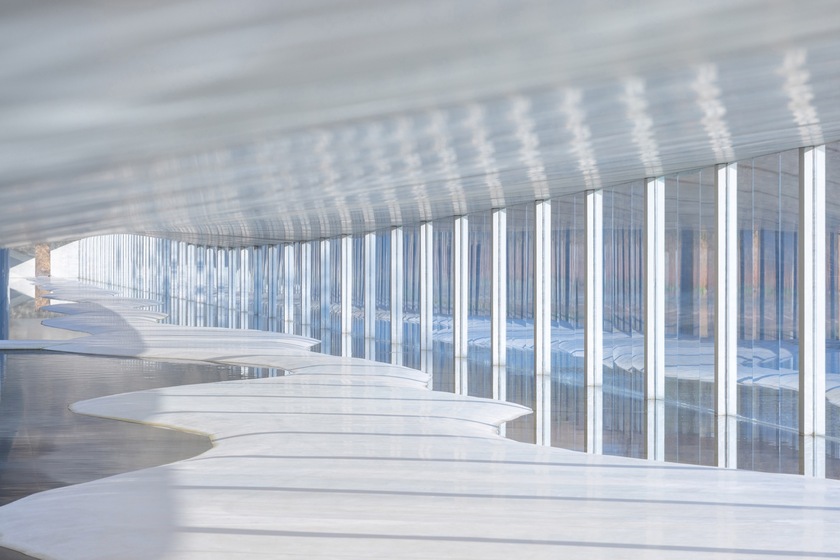
The floor-to-ceiling glass structure creates a light and transparent feel, and in warmer months the glass panels can be opened to allow natural breezes to flow inside.
The architect designed the main building in a linear fashion to merge with the lake, creating a seamless skyline by bringing water into the building. The entire museum aims to “bring the outside in.” The parametric design creates different heights, widths, and slopes, ranging from 1.22m to 4.95m high and from 4.8m to 20m wide.
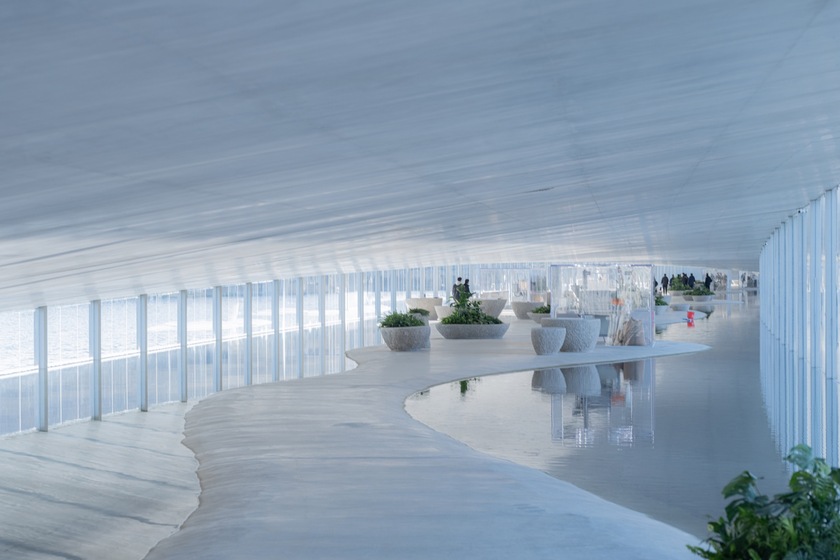

“In some places, the curved roof gently falls down, meeting the lake and the mountainside behind, in others it rises up to the sky, extending out and connecting the building’s interior with the landscape outside,” the architect explains.
The museum is also designed with many open spaces, connecting the inside and outside spaces, creating a feeling of closeness to nature. Natural light fills the spaces, with the main white color... an architectural work that is both in harmony with the surrounding environment and creates an impressive highlight. In particular, each angle of the museum brings different visual experiences.
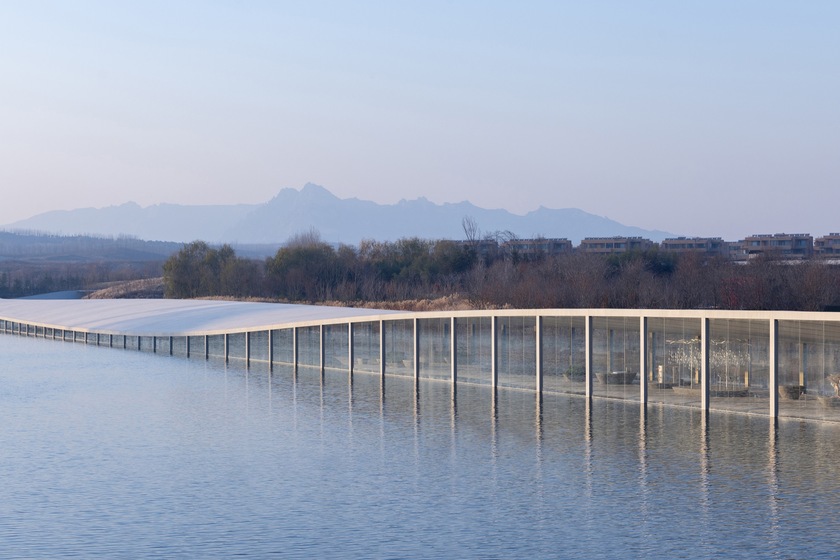
The harmonious connection between nature and people is an important factor in the design inspiration of this project.
Stretching across the building is a raised concrete walkway, simulating a long stretch of sand on a beach. The walkway is designed to be 10cm above the water level, with organic curves inside, like a real beach.
Inside the museum, rough and veined local sandstone is used for tables and chairs. “The concept of this building is based on creating a new landscape inside,” says the architect. “A new exterior is born inside the structure. Thus, a new ecosystem can gently accompany us inside this architecture.”

When given the "assignment" of creating a space related to the water element, Junya Ishigami and his colleagues researched many canals in Venice (Italy) and ancient river towns in China.
Zaishui is not only a traditional art museum, but also a place to display contemporary works, multimedia art exhibitions, creating a creative and innovative space. Visitors can admire the works with many different senses, from sound, light... to even scent. This is also a place for the art-loving community to meet, exchange and share through regularly held seminars and workshops.
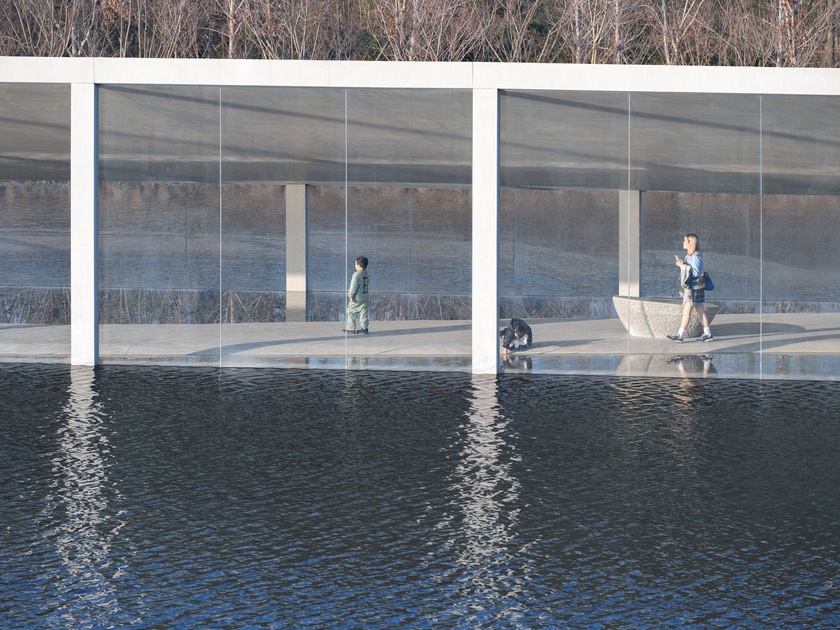
Stretching across the building is a concrete walkway that simulates a long stretch of sand on a beach.
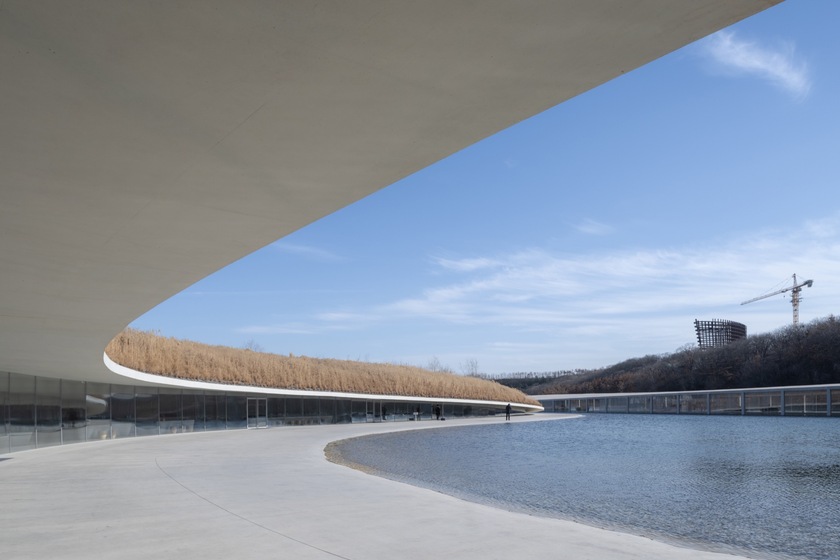
Zaishui Museum is not just a simple architectural work, but a powerful declaration of harmony between humans and nature. It is a living proof that we can create works that are both aesthetically impressive and environmentally friendly, contributing to the protection of our green planet.
The museum is not only a pioneering project, but also an endless source of inspiration for generations of architects and artists around the world. It opens a new direction for sustainable architecture, encouraging designers to seek creative, environmentally friendly solutions to create ideal living and working spaces for people.





